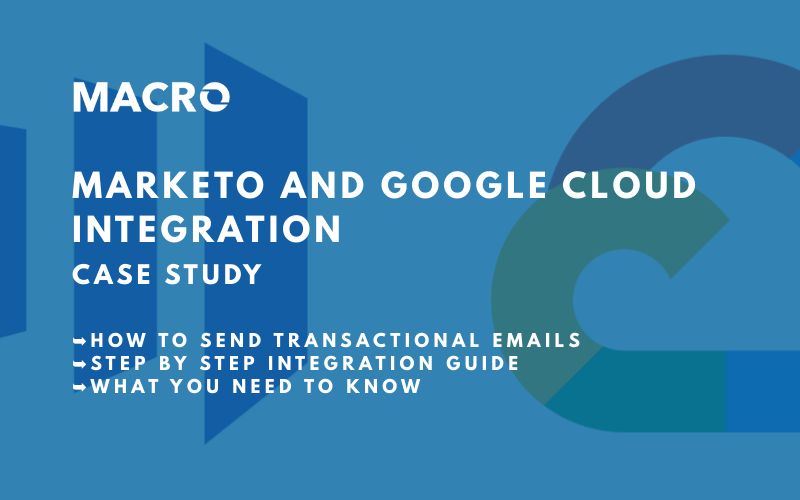
A company’s sales and marketing teams often have a complex, sometimes contentious, relationship. On one hand, both sides realize that they need to work together in order to meet their demand and revenue goals. On the other hand, many sales and marketing teams barely speak to one another – never mind working together.
That’s why sales and marketing alignment is such a hot topic today. Alignment involves many things: Shared goals, common milestones and metrics, well-oiled business processes, and smart technology investments.
But first and foremost, alignment is about one thing: communication. If sales and marketing can’t learn how to work together as a single team, speak the same language, and exchange information freely, then all the technology in the world won’t make a difference.
This guide will help your sales and marketing teams achieve true alignment – and all the benefits that come with it. We’ll walk you through seven foundational steps towards this goal, including evaluating your current sales and marketing processes; establishing common metrics, buyer profiles, and objectives; and more.

Prospect and buyer profiles can be a tricky business. Chances are, your sales and marketing teams each have an established view of their “ideal” prospects, and a lot of their daily activities reflect that vision. Here’s the problem: Marketing and sales teams often use radically different prospect profiles – and they may not even know it. The first step towards solving this problem is to get your sales and marketing leaders together to compare their prospect profiles, focusing on where they overlap and where they don’t. At the same time, you should compare both sets of current profiles against what you know – based on intelligence gathered from your marketing automation, CRM and sales systems – about your best (and worst) customers.
What traits really define a long-term or exceptionally profitable relationship? Which ones could be warning that some prospects might consistently present challenges? Armed with this knowledge, you can proceed to build a single, mutually acceptable set of prospect profiles. In the process, you’ll build an important bridge between your sales and marketing teams that will facilitate better communication and cooperation, and go a long way to resolving entrenched conflict.
Content is another area where your sales and marketing teams may not be on the same page (no pun intended!). Different groups may rely upon different – and often mutually exclusive – sets of content assets. Some of these assets may be quite valuable, but others might be outdated and in need of a refresh. A comprehensive content audit – figuring out what you’ve got, how it’s used, and where to find it – can help to correct this problem. In the process, it’s likely that you’ll discover “lost” assets that could be valuable to other parts of your sales and marketing organization. It’s also likely that you’ll discover gaps where your existing content isn’t suitable for certain nurturing campaigns, buying stages, or prospect profiles.
Also take time to review current best practices for creating and sharing content. According to the 2012 DemandGen Report “Content Preferences Survey,” for example, 75% of the respondents said that B2B marketers were too heavy-handed with the sales messaging in their content. And a 2010 study of B2B buyers found that 95% of buyers chose a solution provider that “provided them with ample content to help navigate through each stage of the buying process.”
Many executives are surprised to discover that their sales and marketing teams answer these questions in very different ways. As a result, neither side speaks the same language, even when dealing with critical concepts like “sales ready” leads (see sidebar).
In some cases, solving this problem is simply a matter of agreeing upon a set of shared definitions. In other cases, prospect data from a marketing automation system can help you identify the most important metrics for tracking and analyzing your company’s sales and marketing performance.
The Service Level Agreement (SLA) isn’t just for technology providers. In fact, SLAs are an important way to define the relationship between your sales and marketing organizations, and to hold both sides accountable for their commitments. The idea is really pretty simple: Begin with a set of agreed-upon performance metrics, such as those identified in Step 3. Then set a series of targets such as:
Create separate SLAs for your sales and marketing teams, with each group making specific commitments to agreed-upon monthly or quarterly goals. The SLA you create will reflect your organization’s unique needs. Just remember that an SLA should be clear and simple; the goal is to encourage collaboration and maintain accountability, not to add a layer of bureaucracy to your business.
When you establish sales and marketing SLAs, you’ll also want to establish a process for handing off leads to sales, and also for sales to establish a closed-loop reporting relationship with marketing. Focus on questions such as:
There’s a big issue here that we haven’t yet tackled: Many sales and marketing organizations treat their pipelines as separate processes. Leads get passed from marketing, and sales pursues those leads, but neither side really has much visibility into how the other side gets things done. Many of the steps that we described above – common definitions, shared metrics, SLAs – are far more useful when your company treats its sales and marketing pipeline as a single, continuous process.
Your sales and marketing teams will still have distinct responsibilities, from prospecting and qualifying at the top of the funnel to closing and maintaining relationships at the bottom. With a single pipeline, however, they’ll also understand how each stage in the process works – and why each is important to the business. Marketing automation technology can help you accomplish this goal, by giving your sales and marketing teams greater visibility into how prospects and leads more through the pipeline.
Alignment is a lifetime process for any organization. You’ll need to follow up on initiatives, track progress, create accountability, and ensure continuous improvement. With an emphasis on shared performance metrics and SLAs, your sales and marketing teams will have plenty of feedback on their efforts – and a lot of motivation to build upon their progress. Start the review process by analyzing your teams’ performances against their SLAs – including average lead follow-up times and the number of qualified leads passed from marketing to sales.
You should also review conversion rates at key stages in your pipeline, since these are an excellent way to gauge the effectiveness of an alignment initiative. Finally, a regular analysis of major customer wins and losses can indicate where to concentrate your future sales and marketing alignment efforts. To find out how you can use your Marketo system to its full potential please contact us at info@macromator.com.

A concierge team’s focus is working closely with your partners to run the local execution of marketing programs and campaigns. They collaborate with different partners within regions or market segments. Concierge teams may also play a role in developing the core campaign components for the vendor, depending on the depth and breadth of the vendor’s marketing arm.
Read More
One of our clients here at Macro is a major utility company in the United States. This is their story, challenges and the middleware solution Macro provided for them bringing together different data-points to send order confirmation emails.
Read More
Today, more than ever, companies need to use many digital marketing tools, and a key piece of the puzzle is getting different tech platforms to ‘talk’ to one another. We can achieve this with middleware. Google Cloud Platform is a newer player to the middleware game, but it is easily one of the most affordable, balanced and powerful tools available in 2020.
Read More